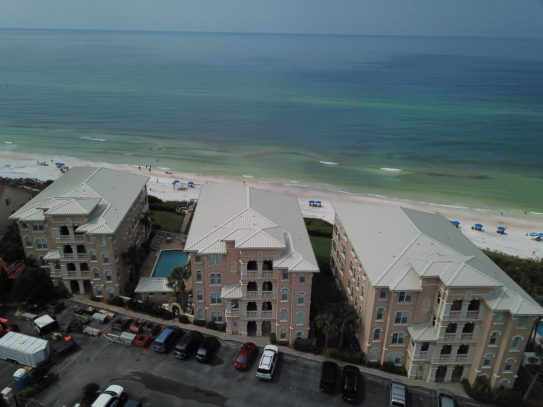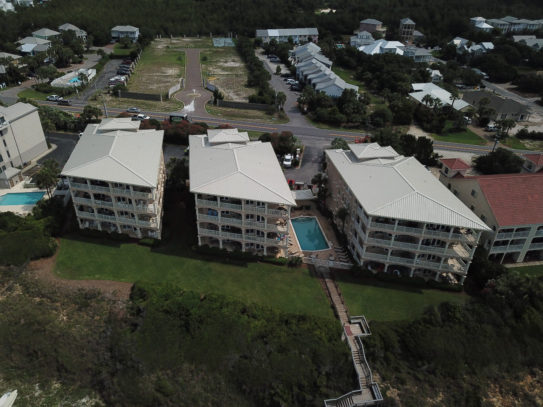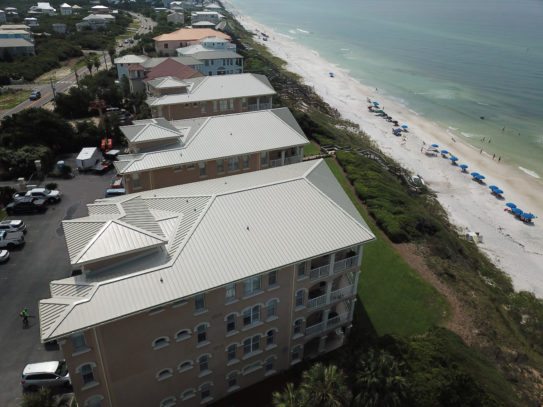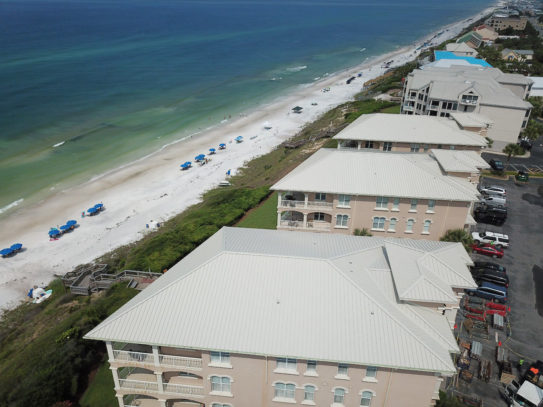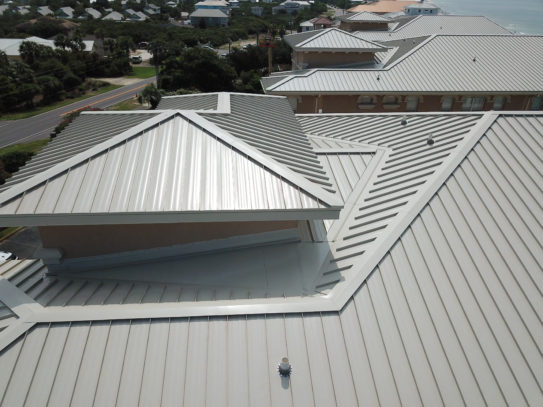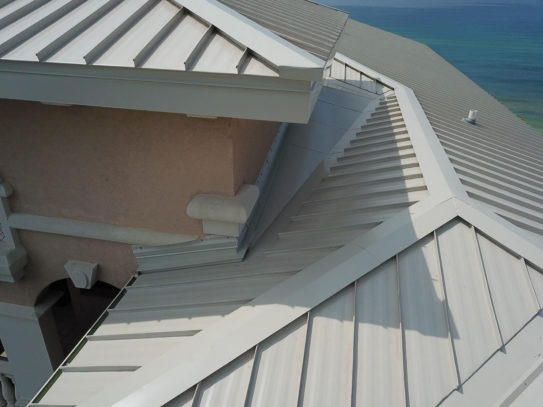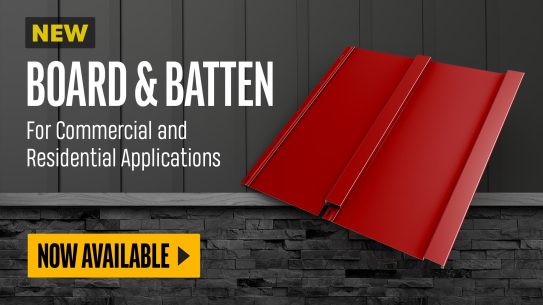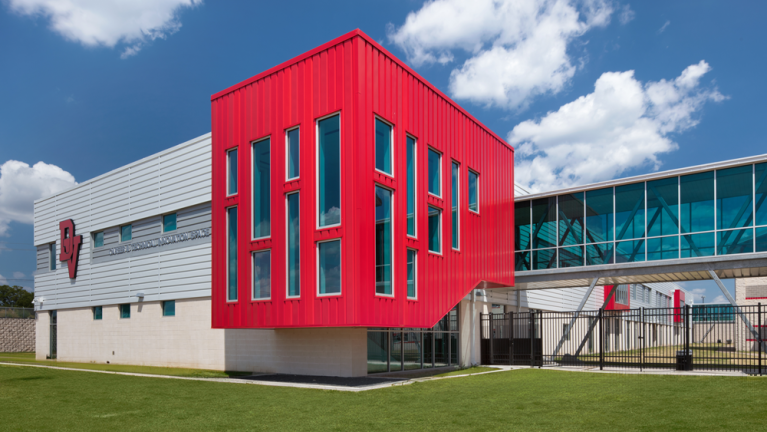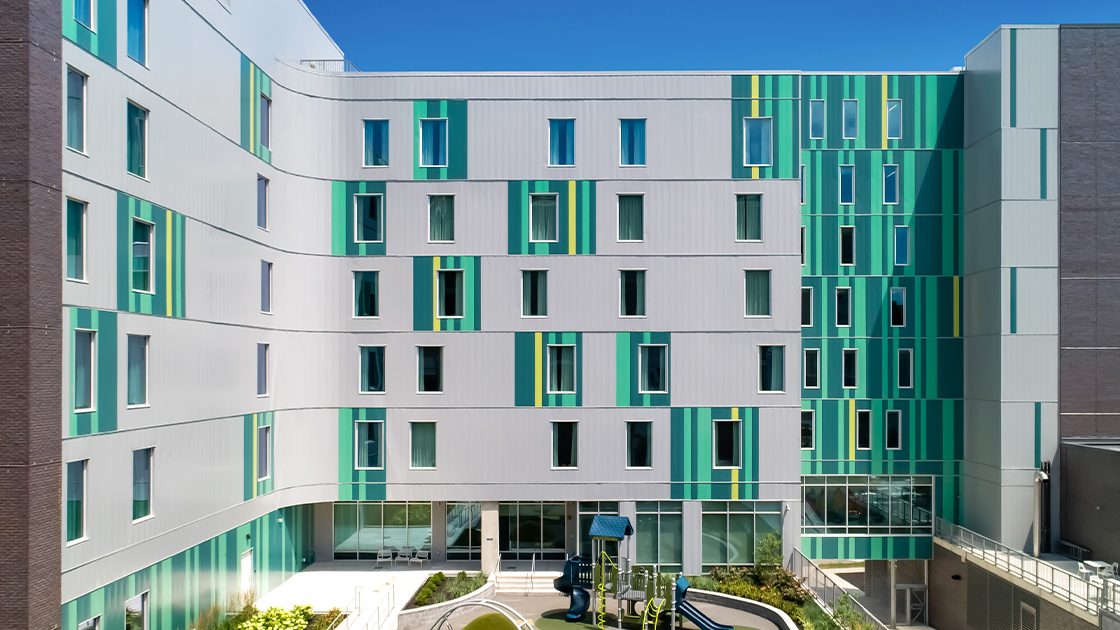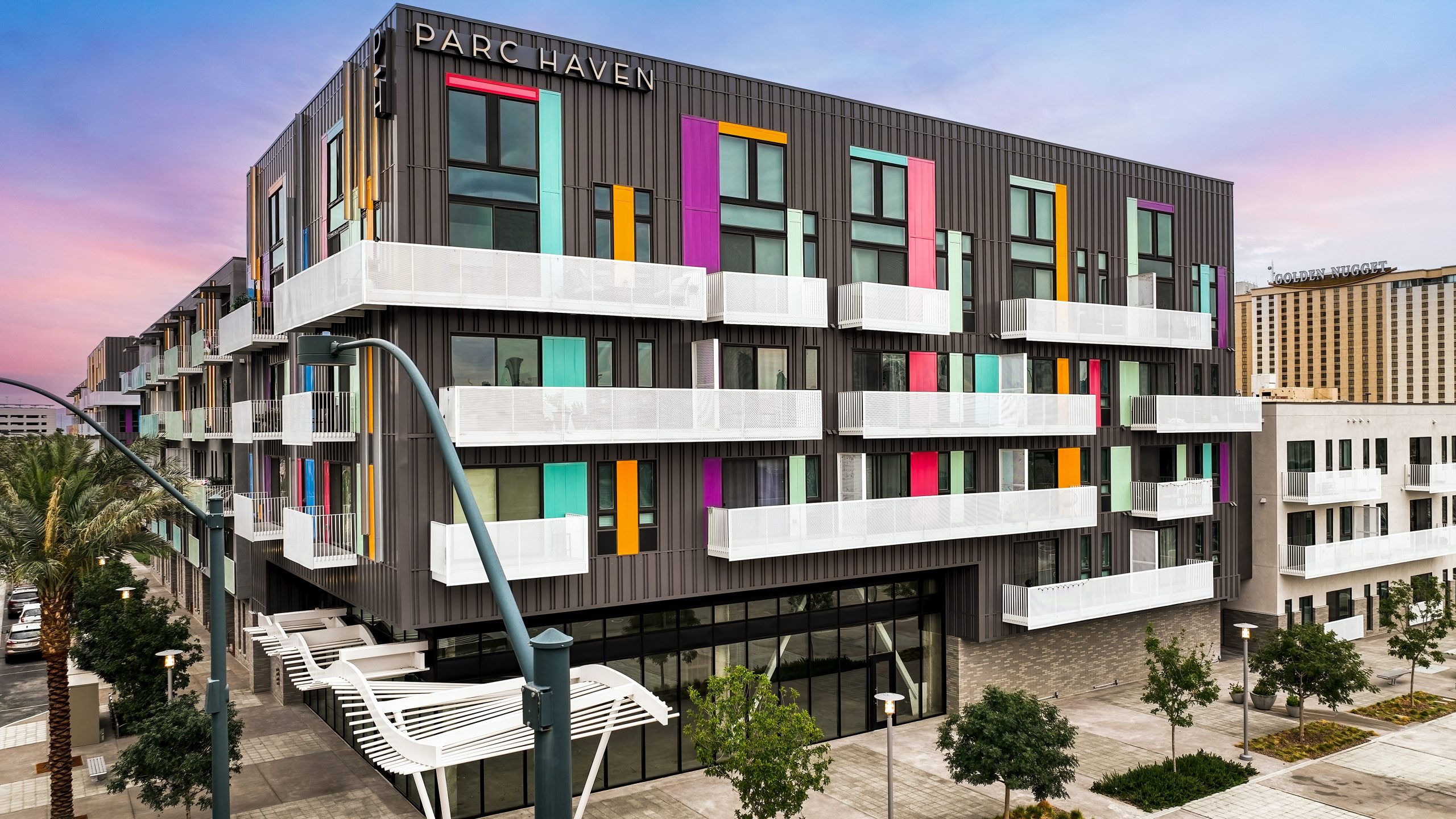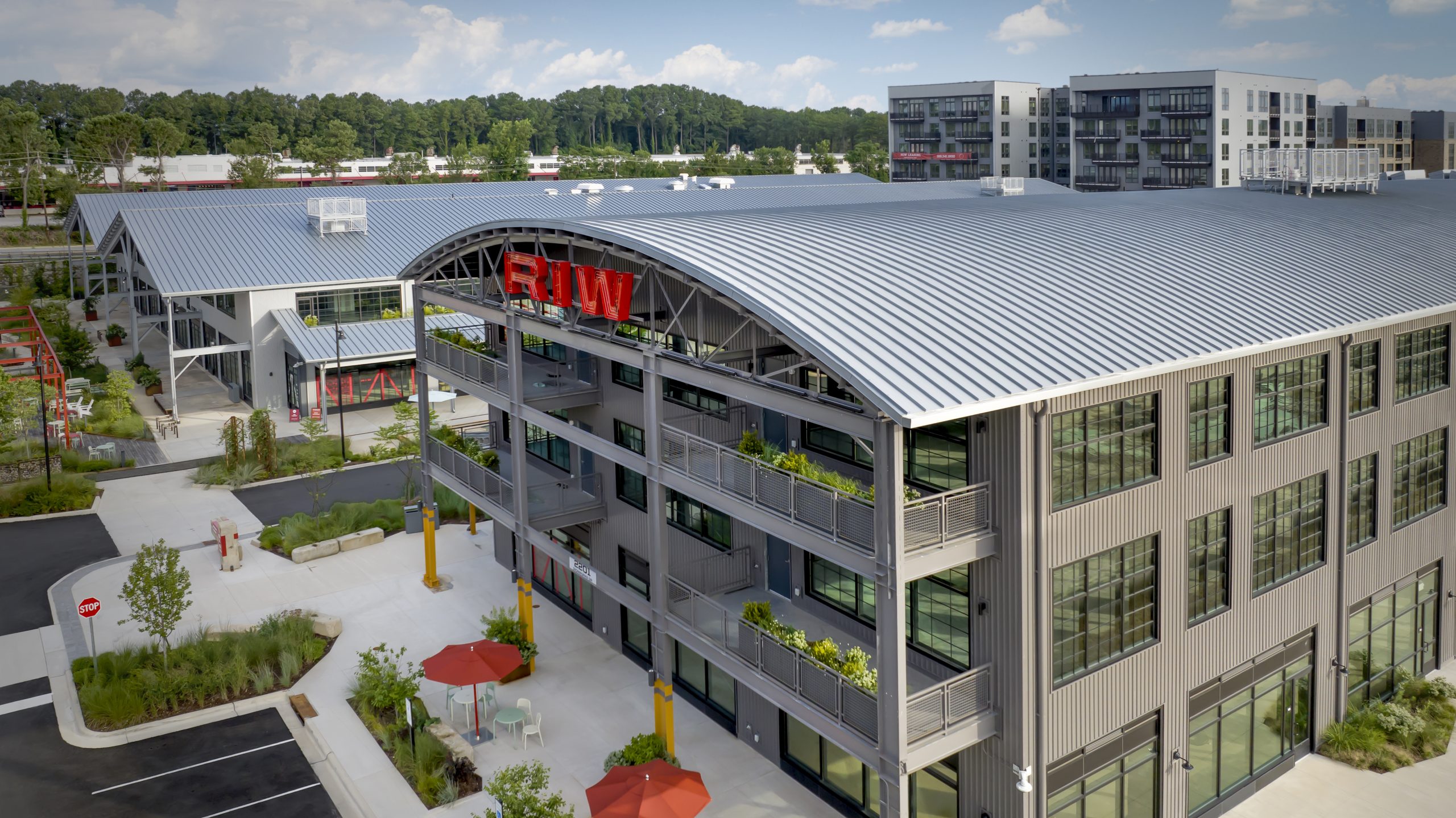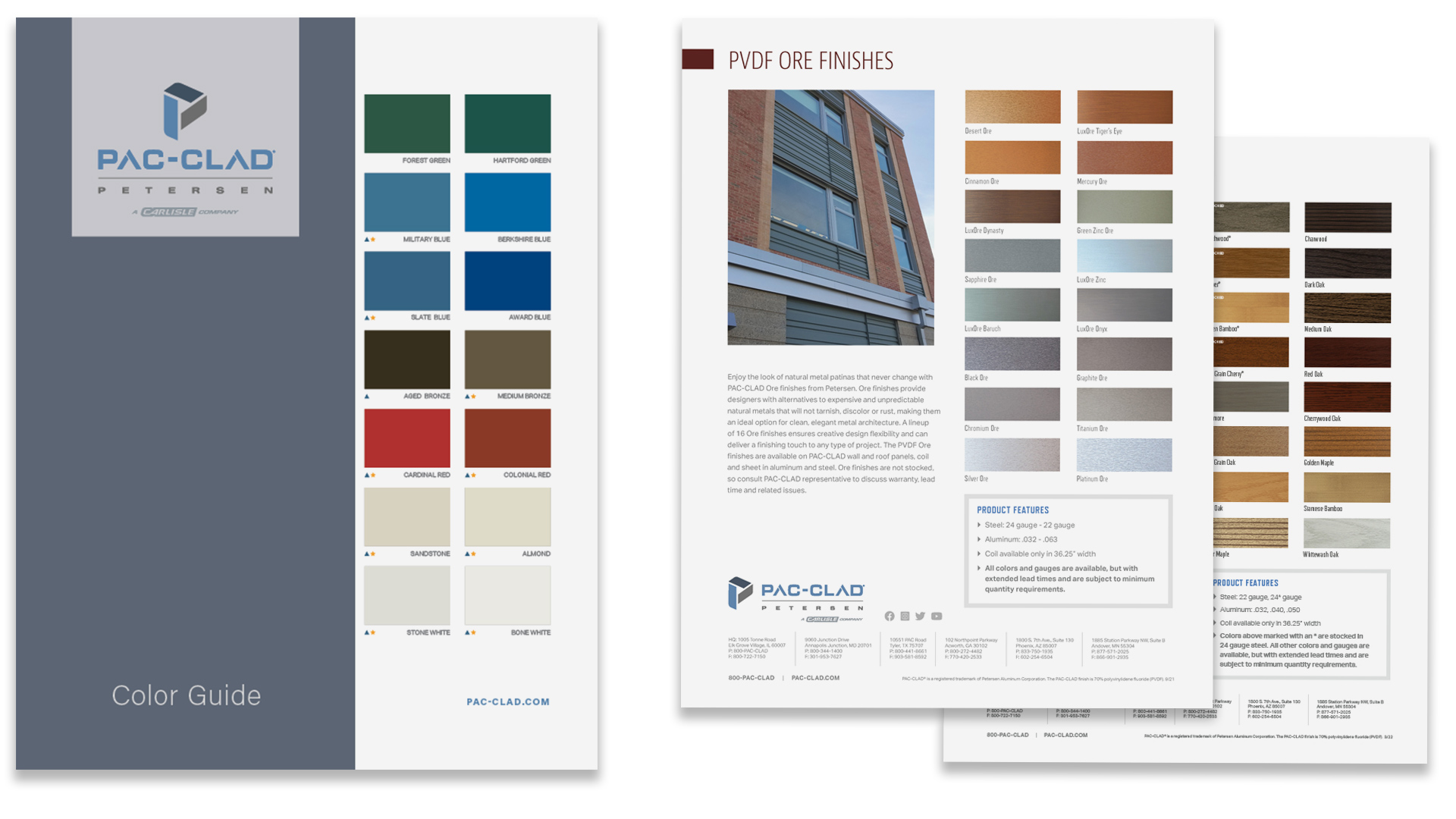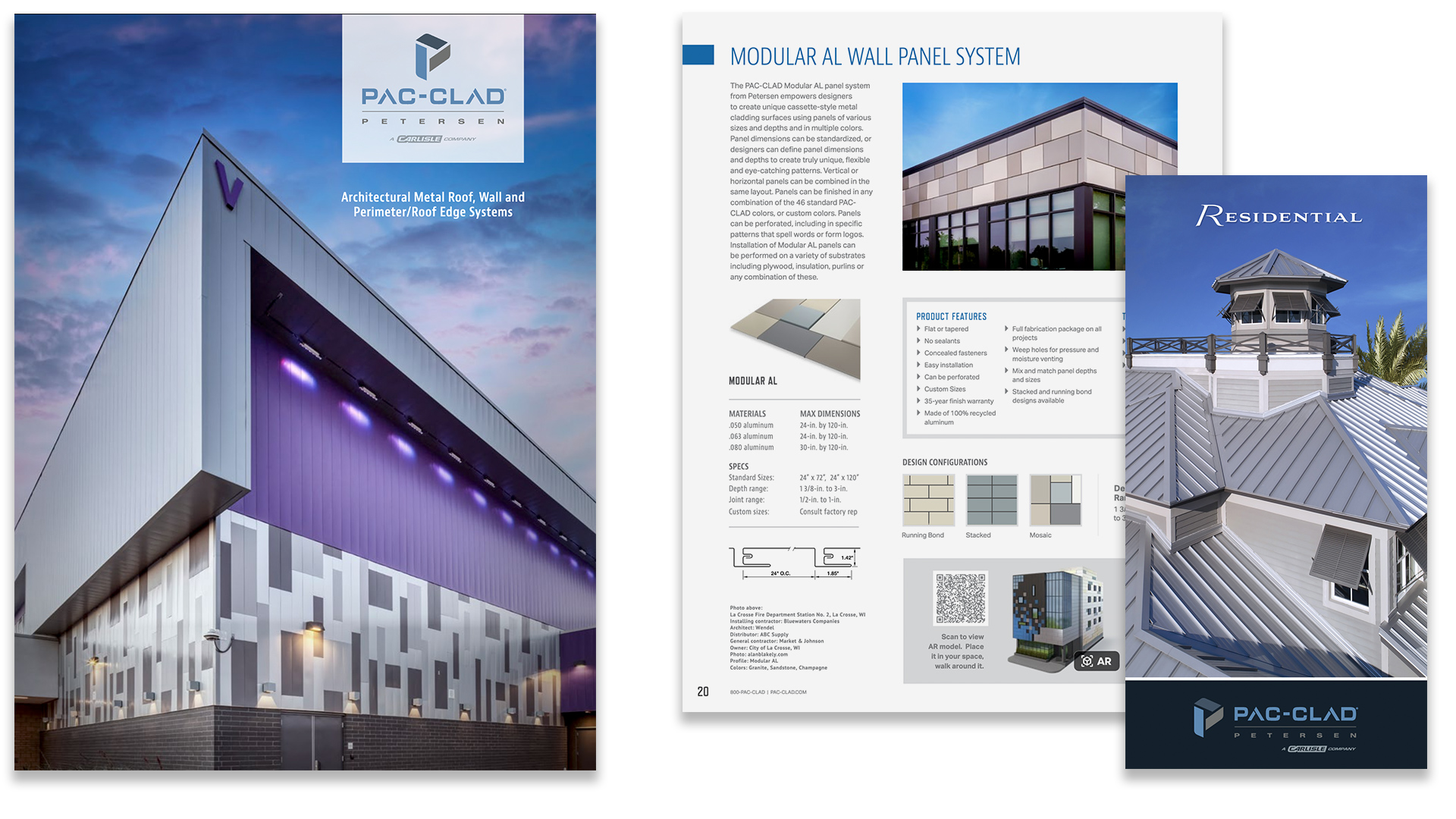Metal roof panels foster carefree coastal living in Northwest Florida
Florida’s Gulf Coast beach communities are known for their particular kind of laid-back vibes. Flip-flops and cargo shorts, fresh grilled seafood and sunsets hailed with raised cocktails are regular accompaniments to time spent enjoying the area’s sand and surf. But the oceanfront views come with the risks posed by salt spray and hurricanes, so building owners often rely on materials they know will stand up to the elements – like standing-seam roofing made from corrosion-resistant aluminum. This is the option owners at the Monterey Place Condominiums made for their three traditionally styled buildings sited just a staircase away from the Gulf.
Monterey Place is one of the earlier developments in the stretch of Northwest Florida known as South Walton (or, more formerly, South Walton County). In the mid- to late-1990s, a million acres of land previously dedicated to timber farming was opened to development, and a number of new communities began popping up amid the cleared forests. The area since has prospered due to another of its natural resources – a 26-mile stretch of sugar-fine, white-sand beach.
Designed in the Mediterranean/Tuscan style made famous by Palm Beach architect Addison Mizner, Monterey Place opened its doors in 1999. By 2018, all three structures were in need of reroofing. Working with the Destin, Fla., firm of Building Engineering and Consultants Inc., along with installation pros from Specialty Roofing Inc. based in Panama City Beach, the homeowners association opted for Tite-Loc Plus panels from Petersen. Approximately 20,000 sq. ft. of the .040 aluminum PAC-CLAD panels were specified in a Sandstone finish. Adding to their durability, Tite-Loc Plus panels are field-seamed to create a 180-degree lock, making them a great choice along the hurricane-prone Gulf Coast.
The installers faced several challenges. Each building’s roof needed to be installed one at a time, in a way that minimized disruptions for the guests who continued to occupy the buildings during construction. Plus, the roof’s design features multiple angles and transitions, each requiring attention to detailing to ensure ongoing water-tightness.


